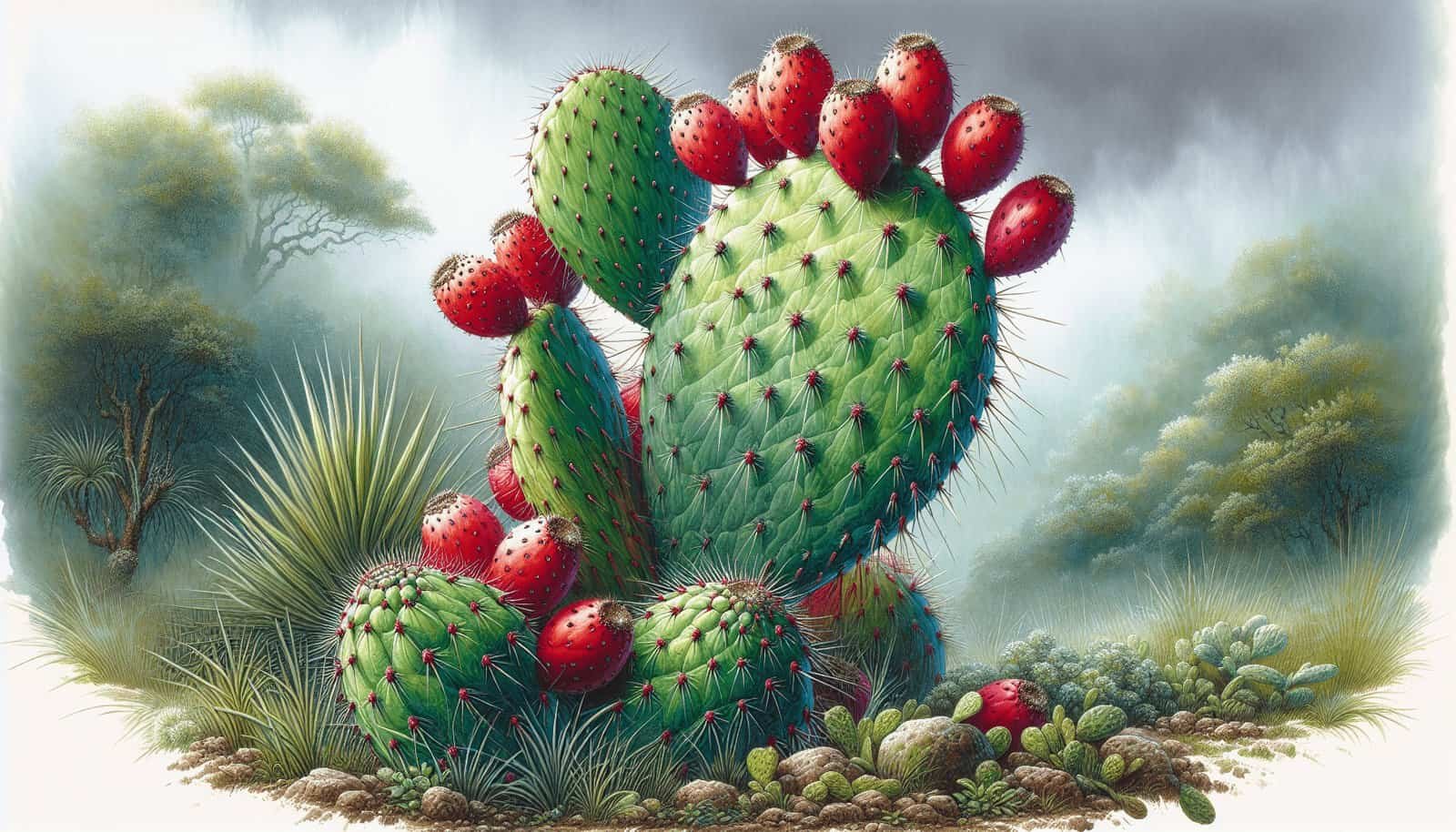Have you ever wondered how you can successfully grow a Nopal cactus, also known as prickly pear, in a humid climate? While this plant is traditionally associated with arid desert conditions, many gardening enthusiasts may be surprised to learn that it’s indeed possible to cultivate this resilient cactus in humid regions. The process requires a bit of creativity and attention to detail, but with the right knowledge, you can enjoy the beauty and benefits of the Nopal cactus no matter where you live.

Understanding the Nopal Cactus
To start, it is important to familiarize yourself with the Nopal cactus’s general attributes. The Nopal cactus, or Opuntia, belongs to the Cactaceae family and is famously known for its paddle-shaped pads. This plant is edible and has numerous health benefits, making it quite popular in culinary circles. Before delving into the specifics of growing these cacti in humid environments, let’s explore their natural habitat and needs.
Natural Habitat and Preferences
Nopal cacti typically thrive in hot, dry climates, common to arid and semi-arid regions. These plants are accustomed to high temperatures, receiving ample sunlight, and thriving in well-drained, sandy soils. Despite their preference for dry conditions, it’s fascinating that they can still survive and adapt to less than ideal environments with some intervention.
Versatile Uses and Benefits
Not only is the Nopal cactus visually appealing, but it also serves multiple practical purposes. The pads, often referred to as “nopales,” are rich in fiber, vitamins, and antioxidants. They are consumed in many dishes, from salads to stews, offering a nutritional punch. The fruit, referred to as “tunas,” is sweet and is used in jellies, candies, and drinks. Additionally, Nopales have medicinal properties, often used in traditional medicine to manage blood sugar and cholesterol levels.
Preparing for Planting in Humid Climates
Transitioning from a dry to a humid environment involves addressing several critical factors, such as soil type, water management, and sunlight exposure. This section will guide you through the adjustments necessary to accommodate the Nopal cactus in humid regions.
Choosing the Right Location
One of the leading challenges in humid climates is the potential for excess moisture, which can be detrimental to cactus growth. Therefore, it is essential to find or create a location that mimics the cactus’ natural environment as closely as possible. Look for a sunny spot in your garden or veranda, preferably where the cactus can enjoy six to eight hours of sunlight daily.
Soil Composition and Drainage
Opt for sandy, well-drained soil to prevent the risk of root rot associated with excessive moisture. Amend your soil with coarse sand, perlite, or small gravel to enhance drainage. Creating a raised bed or using pots can also facilitate better water management. Here’s a simple table to illustrate soil composition adjustments:
| Component | Quantity | Purpose |
|---|---|---|
| Coarse Sand | 50% | Facilitates drainage |
| Potting Soil | 35% | Provides essential nutrients |
| Perlite/Gravel | 15% | Increases soil aeration and drainage |
Opting for Containers
If your garden soil is particularly heavy or clay-like, consider using containers. Containers offer mobility, allowing you to relocate your cactus for optimal sunlight exposure and provide excellent drainage control. Choose containers with sufficient drainage holes and use a cactus-specific potting mix for best results.
Planting Your Nopal Cactus
Now that you’ve prepared your growing environment, it’s time to plant your Nopal cactus. This stage involves obtaining the right materials and following precise planting techniques to ensure robust growth.
Acquiring Cactus Pads
Begin by acquiring healthy Nopal cactus pads from reputable nurseries or garden centers. Look for pads that are green, plump, and free of blemishes. If you’re obtaining pads from an existing plant, use a clean, sharp knife to cut the pads and allow the cut end to heal for a few days to prevent infection.
Planting Technique
When planting Nopal, it’s crucial to position the pads correctly. Place the pad upright about an inch into the prepared soil, ensuring it’s secure but not buried too deeply. Water the pot or bed lightly after planting to settle the soil around the pads. Here’s a step-by-step guide:
- Prep the Pad: Allow the pad to cure by letting it sit in a dry, shaded area for 1-2 weeks.
- Position Properly: Place the healed end of the pad about 1-2 inches deep in soil.
- Secure the Pad: Use stakes to keep the pad upright if necessary.
- Water: Lightly water the base to ensure soil contact without drenching the pad.
Care and Maintenance in Humid Conditions
Once planted, maintaining your Nopal cactus in a humid climate requires ongoing care. This section will discuss water management, sunlight considerations, and common pests you may encounter.
Watering Guidelines
One of the most critical aspects of cactus care is managing water intake. In humid climates, the air already holds significant moisture, which reduces the frequency of watering. Typically, you’ll only need to water when the soil is completely dry several inches below the surface. Over-watering is a common pitfall, so it’s better to err on the side of under-watering.
Ensuring Sufficient Sunlight
Provide ample sunlight, especially in the morning when it’s less intense. If your cactus is in a pot, placing it near a south or west-facing window can provide adequate light. If your region experiences very cloudy conditions, consider using grow lights to supplement natural sunlight.
Monitoring Humidity
If ambient humidity is too high, consider increasing air circulation around the plant to prevent fungal infections. You can do this by spacing plants adequately or using a small fan. Keeping vents and windows open on drier days helps reduce excess humidity.

Handling Pests and Diseases
Although Nopal cacti are resilient, they’re not immune to pests and diseases, especially in humid climates where certain conditions might foster unwanted visitors.
Common Pests
The most common pests affecting Nopal cacti include mealybugs and scale insects. These pests can cause damage by sucking the juices from the plant tissue. Regularly inspect your cactus for signs of infestation, such as white, cottony masses or small brown scales.
- Mealybugs: Wipe affected areas with a damp cloth or cotton swab dipped in rubbing alcohol to remove mealybugs.
- Scale Insects: Use horticultural oil or insecticidal soap as a treatment option.
Disease Management
Fungal infections lead the list of potential diseases, often resulting from excess moisture. Symptoms include discoloration, wilting, or soft, mushy sections on pads. To mitigate this, remove affected parts and ensure the remaining plant has adequate ventilation. Antifungal treatments are available for severe cases, but prevention through environmental control is most effective.
How to Harvest and Use Nopal Cactus
Cultivating the Nopal cactus culminates in successful harvesting. Whether you’re growing it for consumption or ornamental purposes, understanding the harvesting process ensures you maximize its benefits.
Harvesting Nopales
Harvest the pads when they reach a desirable size but are still young and tender, typically around six months of growth. Use a clean, sharp knife to remove them and handle them carefully to avoid the spines. Once harvested, you can remove the spines and prepare the pads for your culinary recipes.
Utilizing the Fruit: Tunas
The brightly colored fruit, or “tunas,” ripens over time and can be harvested when they become soft to the touch. Use gloves or tongs to gather the fruits and strip them of their spines before consumption.
Culinary and Medicinal Uses
In terms of culinary applications, Nopal pads can be grilled, boiled, or added fresh to salads, tacos, and soups. Tunas can be made into drinks, syrups, or enjoyed raw. Beyond the kitchen, Nopal’s medicinal properties are widely acknowledged for their role in regulating blood sugar and reducing inflammation.

Troubleshooting Common Issues
Even with the best care, you might encounter some issues growing Nopal cacti in humid environments. Understanding how to troubleshoot these can save your plant from decline.
Sun Scorch or Burn
Although sunlight is a good friend to cacti, too much direct exposure, especially after cloudy spells, can cause sun scorching. You might notice white patches appearing on the pads. To remedy this, try providing partial shade during the hottest part of the day.
Root Rot
Excessive water in a humid environment can lead to root rot. Root rot is characterized by blackened roots and decaying pads. If you suspect root rot, reduce watering and ensure the cactus is in well-drained soil. In severe cases, repotting with fresh soil may be necessary.
Nutrient Deficiency
While relatively low maintenance, the Nopal cactus may exhibit signs of nutrient deficiency, such as yellowing pads or stunted growth. Consider a cactus-specific fertilizer every few months to support healthy growth, but be cautious not to over-fertilize.
Conclusion
Growing Nopal cactus in a humid climate presents certain challenges but is by no means impossible. By understanding the specific needs of these resilient plants and adapting your gardening techniques accordingly, you can enjoy the perks of the Nopal cactus, from aesthetic appeal to culinary delights, regardless of your locale. With patience and a little effort, you can cultivate a thriving cactus that not only beautifies your space but also enriches your kitchen and promotes health. Happy gardening!


